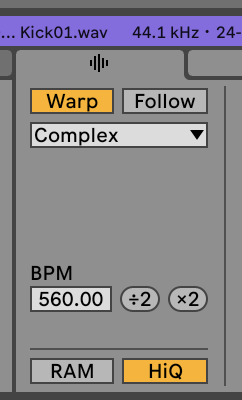Exploring Ableton's Warping Algorithms: A Deep Dive into Time-Stretching and Pitch-Shifting
In the world of digital audio workstations (DAWs), Ableton Live stands out for its innovative approach to music production, particularly with its advanced warping algorithms. Warping, in the context of Ableton Live, refers to the manipulation of audio in terms of timing and pitch. This technology is a game-changer for producers, DJs, and live performers alike. Let's delve into what makes Ableton's warping algorithms so special and how they transform the way we interact with sound.
The Essence of Warping
Warping is essentially about two core processes: time-stretching and pitch-shifting. Time-stretching allows you to alter the tempo of a piece of audio without affecting its pitch, while pitch-shifting enables you to change the pitch without altering the tempo. This flexibility is crucial in modern music production, where tempo and pitch manipulation are frequently used for creative and corrective purposes.
Ableton's Warping Algorithms
Ableton Live offers several warping algorithms, each designed to handle specific types of audio material:
Beats Mode: Ideal for rhythmic or percussive material, Beats mode preserves the transient elements of the sound, ensuring that drums or percussive elements retain their punch and clarity even when the tempo is drastically altered.
Tones Mode: This mode is perfect for monophonic instruments like vocal lines or wind instruments. It uses granular synthesis and frequency-based techniques to provide smooth time-stretching while maintaining the integrity of the pitch.
Texture Mode: Best suited for polyphonic or complex material like pads or full mixes, Texture mode allows for more experimental manipulation, offering control over the density and size of the grains used in the processing.
Re-Pitch Mode: As the name suggests, this mode links tempo and pitch, much like a traditional tape machine. Speeding up the audio increases the pitch, while slowing it down lowers the pitch, mimicking the behavior of analog playback devices.
Complex and Complex Pro Modes: These are the most sophisticated algorithms, designed to handle full mixes or tracks with both rhythmic and melodic content. They provide the most transparent time-stretching and pitch-shifting, though they are more CPU-intensive.
Creative Applications
Ableton's warping algorithms open up a plethora of creative possibilities:
Live Performance Flexibility: DJs and live performers can match the tempo of different tracks effortlessly, making live remixing and mashups a breeze.
Studio Magic: Producers can experiment with time-stretching and pitch-shifting to create unique textures or correct timing and pitch issues in a recording.
Sound Design: By pushing these algorithms to their limits, sound designers can create otherworldly sounds and effects.
Tips for Optimal Warping
Choose the Right Mode: Selecting the appropriate warping mode for your audio material is crucial for the best results.
Fine-Tune with Warp Markers: Use warp markers to make precise adjustments and ensure that your audio stays in time with your project.
Be Mindful of CPU Load: The Complex and Complex Pro modes are resource-intensive. Use them judiciously, especially in large projects.
Conclusion
Ableton's warping algorithms are not just tools; they are instruments in their own right that offer limitless creative potential. Whether you're a producer, a DJ, or a sound designer, understanding and mastering these algorithms can elevate your work and unlock new realms of audio manipulation. As with any powerful tool, practice and experimentation are key to harnessing their full potential.
Experience the magic of Ableton's warping algorithms and reshape the way you interact with sound!









